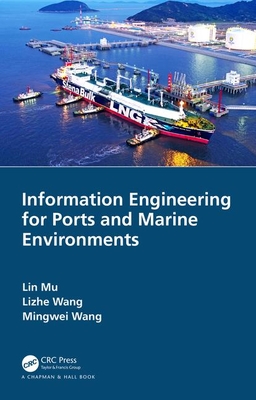Marine Environmental Characterization
暫譯: 海洋環境特徵描述
Nichols, C. Reid, Raghukumar, Kaustubha
- 出版商: Morgan & Claypool
- 出版日期: 2020-05-20
- 售價: $1,530
- 貴賓價: 9.5 折 $1,454
- 語言: 英文
- 頁數: 103
- 裝訂: Quality Paper - also called trade paper
- ISBN: 1681738392
- ISBN-13: 9781681738390
-
相關分類:
流體力學 Fluid-mechanics
海外代購書籍(需單獨結帳)
相關主題
商品描述
The use of environmental data to support science, technology, and marine operations has evolved dramatically owing to long-term ocean observatories, unmanned platforms, satellite and coastal remote sensing, data assimilative numerical models, and high-speed communications. Actionable environmental information is regularly produced and communicated from quality-controlled measurements and skillful forecasts. The characterization of complex oceanographic processes is more difficult compared to inland features because of the difficulty in obtaining observations from often remote and hazardous locations. Regardless, coastal and ocean engineering projects and operations require the collection and analysis of meteorological and oceanographic data to fill information gaps and the running of numerical models to characterize regions of interest. Data analytics are also essential to integrate disparate marine data from national archives, in situ sensors, imagery, and numerical models to meet project requirements. Holistic marine environmental characterization is essential for data-driven decision making across the science and engineering lifecycle (e.g., research, production, operations, end-of-life).
Many marine science and technology projects require the employment of an array of instruments and models to characterize spatially and temporally variable processes that may impact operations. Since certain environmental conditions will contribute to structural damage or operational disturbances, they are described using statistical parameters that have been standardized for engineering purposes. The statistical description should describe extreme conditions as well as long- and short-term variability. These data may also be used to verify and validate models and simulations. Environmental characterization covers the region where engineering projects or maritime operations take place. For vessels that operate across a variety of seaways, marine databases and models are essential to describe environmental conditions. Data, which are used for design and operations, must cover a sufficiently long time period to describe seasonal to sub-seasonal variations, multi-year, decadal, multi-decadal, and even climatological factors such as sea level rise, coastal winds, waves, and global ocean temperatures. Combined data types are essential for the computation of environmental loads for the region of interest. Typical factors include winds, waves, currents, and tides. Some regions may require consideration of biofouling, earthquakes, ice, salinity, soil conditions, temperature, tsunami, and visibility. Observations are also used for numerical forecasts, but errors may exist due to inexact physical assumptions and/or inaccurate initial data, which can cause errors to grow to unacceptable levels with increased forecasting times. Overall, marine environmental characterization tools, from observational data to numerical modeling, are critical to today's science, engineering, and marine operational disciplines.
商品描述(中文翻譯)
使用環境數據來支持科學、技術和海洋作業的方式因長期的海洋觀測站、無人平台、衛星和沿海遙感、數據同化數值模型以及高速通訊而發生了劇變。可行的環境信息定期從經過質量控制的測量和精確的預測中產生並傳達。與內陸特徵相比,複雜的海洋過程的特徵化更具挑戰性,因為從通常偏遠和危險的地點獲取觀測數據的難度較大。儘管如此,沿海和海洋工程項目及作業仍需要收集和分析氣象和海洋數據,以填補信息空白,並運行數值模型以特徵化感興趣的區域。數據分析對於整合來自國家檔案、現場傳感器、影像和數值模型的不同海洋數據以滿足項目需求也是至關重要的。全面的海洋環境特徵化對於在科學和工程生命週期(例如研究、生產、作業、生命結束)中基於數據的決策至關重要。
許多海洋科學和技術項目需要使用一系列儀器和模型來特徵化可能影響作業的空間和時間變化過程。由於某些環境條件會導致結構損壞或作業干擾,因此使用已標準化的統計參數來描述這些條件,這些參數是為工程目的而制定的。統計描述應該涵蓋極端條件以及長期和短期的變異性。這些數據也可用於驗證和確認模型及模擬。環境特徵化涵蓋工程項目或海事作業發生的區域。對於在各種航道上運行的船舶,海洋數據庫和模型對於描述環境條件至關重要。用於設計和作業的數據必須涵蓋足夠長的時間段,以描述季節性到次季節性變化、多年、十年、多十年,甚至氣候因素,如海平面上升、沿海風、波浪和全球海洋溫度。結合數據類型對於計算感興趣區域的環境負荷至關重要。典型因素包括風、波浪、洋流和潮汐。一些區域可能需要考慮生物附著、地震、冰、鹽度、土壤條件、溫度、海嘯和能見度。觀測數據也用於數值預測,但由於不精確的物理假設和/或不準確的初始數據,可能會存在誤差,這可能導致隨著預測時間的增加,誤差增長到不可接受的水平。總體而言,從觀測數據到數值建模的海洋環境特徵化工具對於當今的科學、工程和海洋作業學科至關重要。













